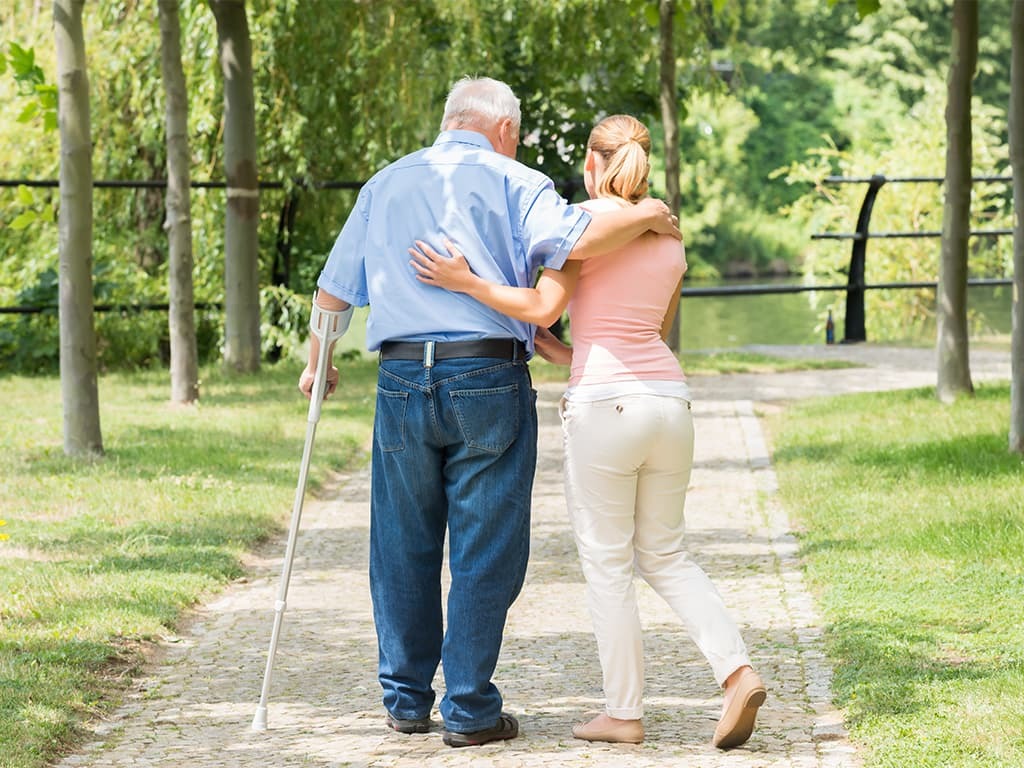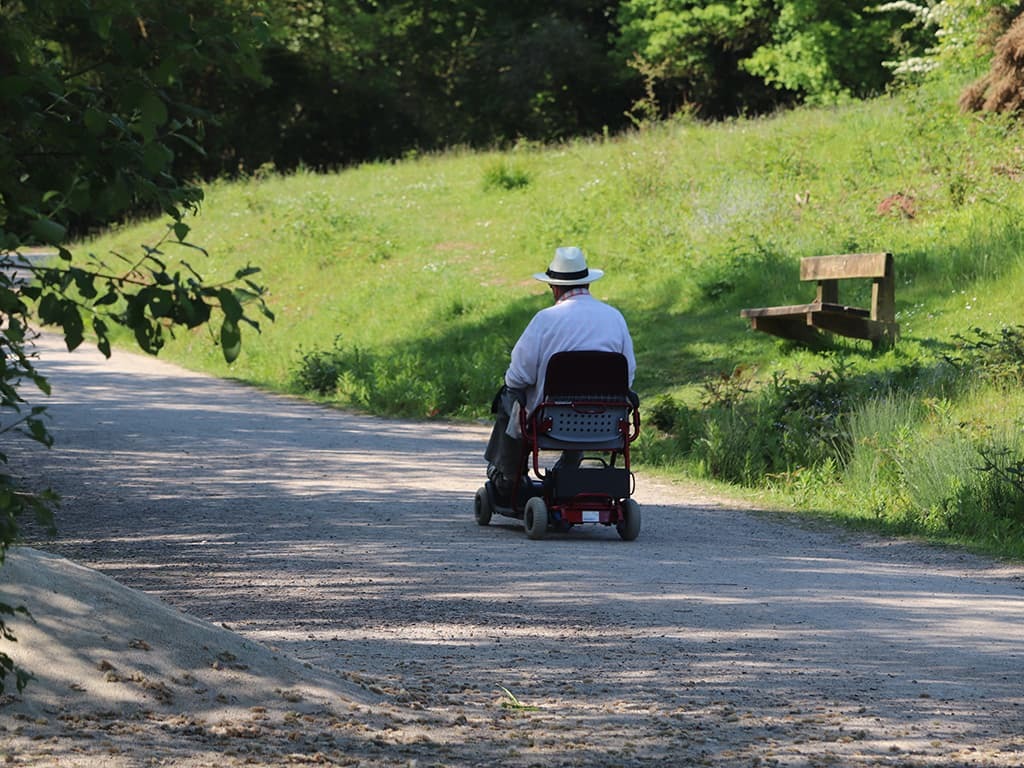- You are here:
- Home »
- Blog »
- ALS Care »
- Coping with Reduced Mobility Following an ALS Diagnosis

Coping with Reduced Mobility Following an ALS Diagnosis
There are many symptoms associated with ALS and they present a range of different challenges for the diagnosed individual, particularly as the disease progresses.
Symptoms of ALS include difficulty swallowing, slurred speech, muscle cramps and stiffness. In the early stages, there may be issues with balance or the individual may have trouble holding everyday objects firmly.
One of the major difficulties that ALS patients face is loss of mobility. As the nerves serving the muscles of the legs slowly begin to deteriorate and then die, walking and general movement become increasingly difficult.
Here we take a closer look at how ALS affects mobility and the different ways this can be managed as the disease progresses and muscles become increasingly weak.
The good news is that there is a wide range of assistive technology available to help maintain quality of life even up to the later stages of the disease.
How is Mobility Affected by ALS?
ALS is a neurodegenerative disease where the nerves serving all parts of the body gradually begin to deteriorate and then die off.
While the muscles in the legs remain fully functioning, the nerves attached to them don’t work because the instructions coming from the brain are disrupted or non-existent.
That means an individual may, for example, have difficulty maintaining balance or get tired easily when they are walking because it is so difficult.
As the disease progresses, the individual will lose all movement in their legs and not be able to walk at all.
Coping with Mobility Issues Following an ALS Diagnosis
At each stage of the disease, there are a number of different approaches that can be used, from physiotherapy to using mobility scooters. These supporting technologies and techniques should be used at the appropriate time in relation to how far the disease has progressed.
Physiotherapy
Mobility issues following an ALS diagnosis may begin fairly early on and it’s essential to find the appropriate solution at each stage of the illness.
At the start of the illness, it may be a simple case of ensuring that the muscles and joints are kept in good condition. Exercise can help with this, but professional medical advice should be sought.
This normally involves working with a qualified physiotherapist. Ideally they they should be a specialist used to dealing with ALS patients. The reason for this is that excessive exercise or the wrong type of workout can actually make things worse.
The help of a physiotherapist will be very useful as the disease progresses – they will work to maintain movement in the patient for as long as possible. As mobility diminishes, they assist with keeping the joints moving and can help with reducing pain.
Cane/Walking Stick
Probably the first assistive device that an ALS patient will start to use is a cane or walking stick. This is often because the individual may have balance issues and the stick is used for support rather than aiding walking.
It’s not just weakness in the legs that can be a problem. When the muscles in the neck and trunk begin to fail, it causes the individual to stoop and become less well-balanced. An ankle-foot orthosis may also be used to aid footfall as walking becomes more difficult.
Wheelchair/Scooter

As mobility becomes increasingly affected, the next step may be to use a wheelchair or mobility scooter. Wheelchairs for ALS patients have developed a lot in the last few decades. Modern examples are easy to manage and very lightweight.
The individual may also require a wheelchair or scooter because the disease has affected their breathing and stamina. Individuals should work with a physiotherapist or occupational therapist to find the appropriate solution to their needs.
One solution might be a customized power wheelchair that has been specifically designed for the individual.
Hydraulic/Hoyer Lifts
Moving in and out of a wheelchair can be increasingly difficult as the disease progresses. This may mean using other assistive technologies such as a Hoyer Lift is necessary.
The Hoyer Lift can also be used to lift a person off the floor and this type of device is invaluable for caregivers who may be looking after an ALS patient at home.
It’s really important to have regular assessments by a qualified health professional such as a physiotherapist or occupational therapist to ensure the individual is getting all the support they need.
Usually, this involves measuring the physical ability of the patient regularly and working to find the right assistive technology that improves their quality of life.
The good news is that ALS patients have a lot of options at their disposal nowadays to maintain their independence.
